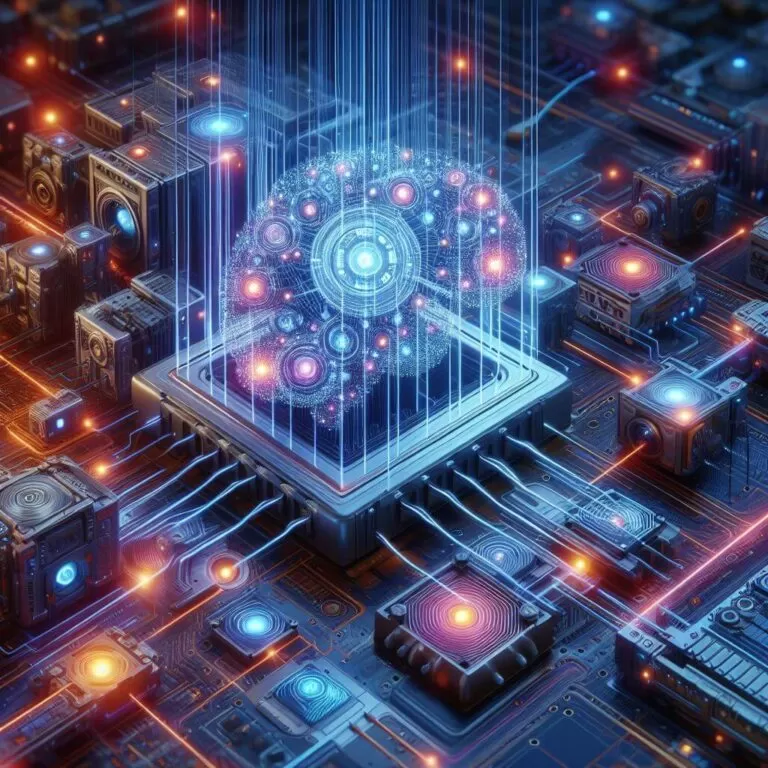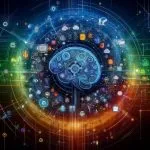Unraveling Deep Learning: An Introduction to Neural Networks

Artificial Intelligence (AI) has been transforming the world in extraordinary ways, and at the core of this transformation lies deep learning. This is one of the most powerful approaches in modern AI, empowering computational systems to learn autonomously and solve complex problems.
In this article, you’ll understand what deep learning is, how the artificial neural networks that power it work, the main types of architectures used, their most impressive applications, and the challenges that still need to be overcome.
Article Content
What Is Deep Learning?
Deep learning is an advanced machine learning technique that uses artificial neural networks with multiple layers to analyze and learn from data. It stands out for its ability to handle large volumes of complex and unstructured data, such as images, audio, and natural language.
Unlike traditional methods, deep learning automates much of the feature extraction process, enabling highly accurate results in cognitive tasks. This has led to major advancements in virtual assistants, medical imaging diagnostics, self-driving cars, language translation, and much more.
What Are Artificial Neural Networks?
Artificial Neural Networks (ANNs) are computational systems inspired by the structure of the human brain. They consist of units called artificial neurons, connected by “synapses” with weights that determine the influence on one another. Each neuron performs mathematical operations on the data it receives and passes the results to other neurons.
During the training process, these weights are adjusted using optimization algorithms (such as gradient descent) to reduce errors and improve the network’s ability to make correct predictions or classifications.
ANNs form the foundation of deep learning, enabling computers to detect complex patterns in data—even without explicit instructions.
Learn more: DeepLearning.AI – Andrew Ng
Neural Network Structure: Layers, Neurons, and Activation Functions
Neural networks are organized into layers, each playing a key role:
- Input layer: receives raw data (such as image pixels or words from text).
- Hidden layers: perform calculations and transformations on the data. The network’s complexity depends on the number and type of these layers.
- Output layer: produces the final result (such as an image category or chatbot response).
Each neuron applies an activation function that determines whether it should be activated, simulating biological neuron behavior. The main activation functions include:
- Sigmoid: returns values between 0 and 1. Ideal for binary classification.
- Tanh: returns values between -1 and 1. Centered around zero.
- ReLU (Rectified Linear Unit): returns zero for negative values and the same value for positives. Widely used for its simplicity and efficiency.
These functions introduce non-linearity into the network, allowing it to learn complex relationships within the data.
Types of Deep Neural Networks
There are various neural network architectures, each designed for specific data types or tasks:
Simple Perceptron
The most basic form of a neural network, containing a single neuron. It’s used for very simple binary classification tasks and can only solve linearly separable problems.
MLP (Multilayer Perceptron)
Contains multiple hidden layers. Used for basic image classification, pattern recognition, and numerical data prediction.
CNN (Convolutional Neural Network)
Designed for image processing. Uses convolutional filters to extract local features. Applied in facial recognition, object detection, and medical imaging diagnostics.
RNN (Recurrent Neural Network)
Ideal for sequential data such as text and audio. Used in language translation, speech transcription, and sentiment analysis.
LSTM and GRU
Advanced versions of RNNs with improved long-term memory. Essential for tasks such as automatic video captioning and chatbots.
GAN (Generative Adversarial Network)
Uses two networks (a generator and a discriminator) to create realistic new data. Applied in image generation, deepfakes, art, and fashion.
Examples: OpenAI – Generative AI Models | Google Research

Main Applications of Deep Learning
Deep learning has revolutionized various areas of society. Some of its key uses include:
Image Recognition
Networks like CNNs enable computers to recognize objects, faces, and signs with accuracy that sometimes surpasses human performance. Used in security, medicine (medical imaging diagnostics), and precision agriculture.
Natural Language Processing (NLP)
Models such as BERT, GPT, and T5 use deep neural networks to understand and generate natural language. Applied in translators, virtual assistants, and sentiment analysis.
Further reading: Virtual Assistants and NLP
Content Generation
With GANs and diffusion models, AI can create original images, texts, music, and videos, boosting creativity in gaming, design, advertising, and visual arts.
Autonomous Vehicles
Deep learning enables self-driving cars to perceive their surroundings and make real-time decisions based on cameras, sensors, and radar.
Current Challenges and the Future of Deep Learning
Despite major progress, deep learning still faces challenges such as:
- High demand for labeled data
- Limited explainability (black-box models)
- High energy consumption and reliance on specialized hardware
Current research focuses on making models:
- More energy-efficient
- More interpretable and explainable
- Less dependent on large-scale labeled data
The future points toward integrating deep learning with reinforcement learning, self-supervised learning, and symbolic AI—creating smarter, more versatile, and accessible systems.
Research trends: AI Now Institute | The Lancet Digital Health – AI in Medicine
Conclusion
Deep learning stands at the forefront of modern artificial intelligence. Its neural networks, inspired by the brain’s functioning, can solve highly complex problems with applications that already impact daily life across multiple sectors.
As research advances and accessible tools become more widespread, deep learning is expected to expand even further, democratizing AI access and accelerating technological innovation.
If you want to truly understand the future of AI, understanding deep learning is an essential step.



